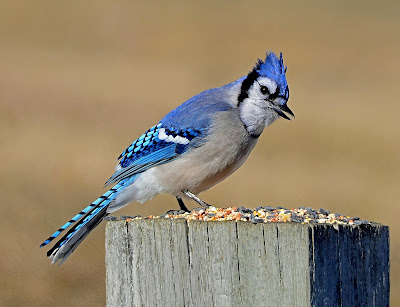NATURE NEWS
Soon hummingbirds will migrate thousands of miles south
 |
| Female ruby-throated hummingbird by Rodney Campbell |
When I lived in California, I always worried
about hummingbird identification. There were at least four different species, and they were all so little, moved so fast, and the females were indistinguishable to the untrained eye. We have it easy here in New England.
about hummingbird identification. There were at least four different species, and they were all so little, moved so fast, and the females were indistinguishable to the untrained eye. We have it easy here in New England.
There is only one species of hummingbird you are likely to see here (aside from the rare sightings of black-chinned, rufous and Allen’s hummingbirds): our only breeding hummingbird, the ruby-throated hummingbird (Archilochus colubris). They zoom into my garden at least a couple times a day to check out the flower offerings, ignoring the zinnias and cone flowers, preferring the more tubular flowers like bee balm and jewelweed.
My co-teacher wanted to know where ruby-throated hummingbirds go in winter. As usual, I had no idea, just the vague notion that they must go somewhere south. I knew they followed the sapsuckers north in the spring, drinking the sap liberated by the sapsuckers, and that they would always show up, like clockwork, when my quince bloomed.
I had read that the timing of arrival of ruby-throated hummingbirds is variable but affected by the changing climate (Courter et al., "The Auk," v. 130:1, 2013). Thinking about any kind of migration of these tiny birds is mind-blowing. How far can they fly with such tiny wings? But then, if monarch butterflies can migrate thousands of miles, a hummingbird should be able to as well.
First, some cool facts from the Cornell Laboratory of Ornithology: the ruby-throat beats its wings on average 53 times a second! Their short legs prevent them from walking, but they can shuffle along on a perch, and a ruby-throat can raise its feet up and over its wing to scratch its neck – a bit more dexterous than I would have thought.
In answer to my colleagues’ question about hummingbird migration, it is worth noting that hummingbird migration is not well documented, so we don’t know much. Banding studies suggest that individuals often arrive at the same feeder, at the same time, year after year. However, it isn’t known whether they follow the same route to accomplish this. Banding studies also suggest that most hummingbirds migrate across the Gulf of Mexico to South America, though some, the ones that breed furthest north, might winter over in the southern United States. Regardless of destination, they’re flying thousands of miles. That beats any human Ironman or ultramarathon race . . . and they do it with such tiny wings!
Ruby-throated hummingbirds have the largest breeding range of any hummingbird. (It encompasses the entire Eastern seaboard from southern Canada west to the American and Canadian prairie states.) During the spring breeding season, males court the females with spectacular displays and looping, U-shaped dives towards the females. If the female is receptive, the male will make fast side-to-side flights while facing her (Cornell Lab). Their nests are the stuff of fairy tales: thimble-sized, built of thistle or dandelion down, spider silk and pine pitch, camouflaged with lichen and moss. The eggs are tiny, half an inch in length – hard to imagine that they’re big enough to house a baby bird.
According to the Cornell Lab, “male ruby-throated hummingbirds don’t stick around long. Pairs are together long enough for courtship and mating – just a matter of days to weeks. Then he’s off on his own, and may begin migration by early August.” The female and juvenile ruby-throats should all be gone by October. They can’t tolerate our frosts or cooler temperatures. There is an interesting urban myth that ruby-throats hitchhike rides with Canada geese, though this has been debunked. The ruby-throats fly on their own, hugging the tree tops and the waves in the Gulf of Mexico as they head south.
Don’t worry about taking your hummingbird feeders down. That's another myth: that keeping your feeder up will keep them in the north too long. Migration is mostly controlled by photoperiod. Days get shorter, they put on fat, and they leave. They can fly faster than I would have thought, averaging 25 to 30 mph hour during migration. (That translates into approximately 20 hours to cross the Gulf of Mexico.) Final thought: Hummingbirds don’t fly as a flock. Instead, imagine individual little hummingbirds making their way south. Wish them luck!



Comments
Post a Comment